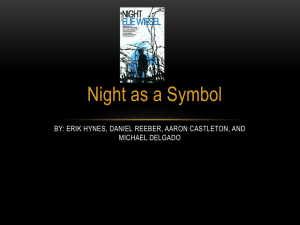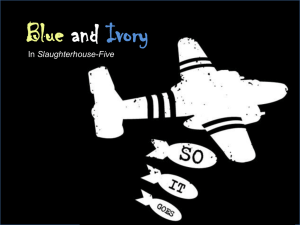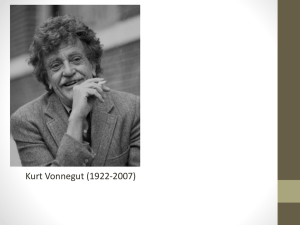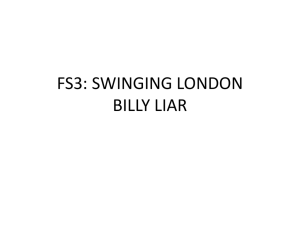Suffering ms. Hanna Slaughterhouse-Five
advertisement
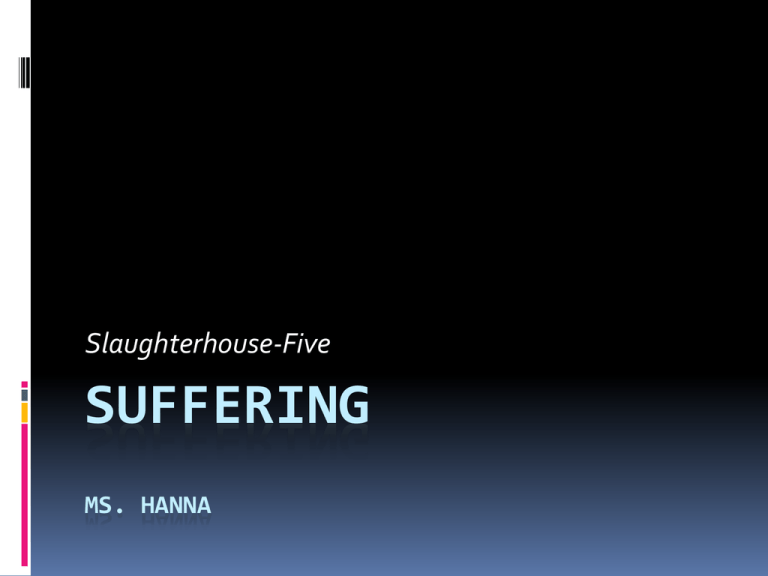
Slaughterhouse-Five SUFFERING MS. HANNA Thesis Statements Through showcasing the suffering of Billy Pilgrim and other POWs during WWII, Vonnegut attempts to counteract the glamorization of war that previous novels and Hollywood movies have propounded. Billy not only suffers physically during his imprisonment, but suffers mentally long after his experiences in WWII; Vonnegut wants the reader to empathize with Billy and see how war destroys the human body, mind, and spirit. Theme Statement Suffering is unjust, often afflicting those who do not deserve it; furthermore, unnecessary suffering, like suffering as a result of war, has everlasting devastating effects on human beings. Suffering Billy, after all, had contemplated torture and hideous wounds at the beginning and the end of nearly every day of his childhood. Billy had an extremely gruesome crucifix hanging on the wall of his little bedroom in Ilium. A military surgeon would have admired the clinical fidelity of the artist's rendition of all Christ's wounds--the spear wound, the thorn wounds, the holes that were made by the iron spikes. Billy's Christ died horribly. He was pitiful. So it goes. (Vonnegut 48) Suffering In the first chapter of Billy’s story, Billy is thinking this after Roland Weary talks to him about the various torture devices he has brought with him. It shows that Billy has been exposed to pain and suffering even as a young innocent child. Vonnegut uses sarcasm to connect the violence in both religion and war. Vonnegut attempts to show how we have become desensitized to such images because we are overexposed. For Catholics, it is such a part of their imagery, they often lose sight of the real suffering behind the image much like we have lost sight of the real suffering behind war. Suffering Before Billy opened his eyes, it seemed to him that the tones might have been those used by the friends of Jesus when they took His ruined body down from His cross. So it goes. Billy opened his eyes. A middle-aged man and wife were crooning to the horses. They were noticing what the Americans had not noticed--that the horses' mouths were bleeding, gashed by the bits, that the horses' hooves were broken, so that every step meant agony, that the horses were insane with thirst. The Americans had treated their form of transportation as though it were no more sensitive than a six-cylinder Chevrolet. They made Billy get out of the wagon and come look at the horses. When Billy saw the condition of his means of transportation, he burst into tears. He hadn't cried about anything else in the war. (Vonnegut250) Suffering In the final chapter of Billy’s story, as the POWs return to Dresden after the bombing, Billy weeps over the suffering of the horses that are pulling his wagon. The horses’ suffering is related directly back to the crucifix and Jesus’ suffering, bringing this theme full circle. Billy has been exposed to suffering from his childhood and has witnessed first hand the suffering of war, however it is only when Billy is the direct cause of another’s suffering, albeit an animal, he finally is able to weep. He is finally able to empathize and connect to another’s suffering. Vonnegut is putting forth the question: Why do we need to be the direct cause of another’s suffering in order to empathize and therefore put a stop to it?


